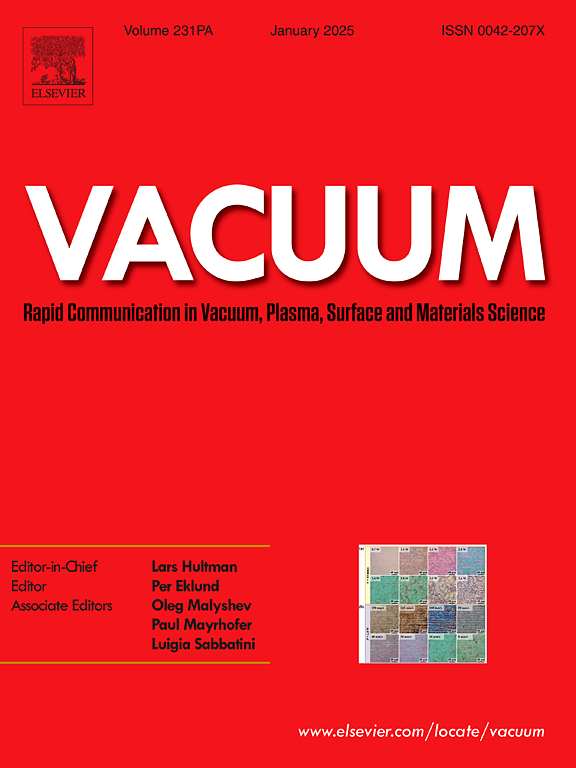Transmission electron microscopy with in-situ ion irradiation: Facilities and community
IF 3.9
2区 材料科学
Q2 MATERIALS SCIENCE, MULTIDISCIPLINARY
引用次数: 0
Abstract
Whilst there is a clear scientific and technological need for the technical capabilities of transmission electron microscopes with in-situ ion irradiation, it also requires a collaborative community of international researchers to support such facilities in successfully meeting this demand. Instruments of this type serve to provide fundamental understanding of the mechanisms which drive changes in materials important to nuclear fission and fusion energy, the semiconductor industry, quantum information systems, space travel, astronomy, geology and many more applications. As these areas continue to evolve and the instrumentation possibilities expand, the capacity of in-situ ion irradiation facilities must also develop hand-in-hand with the user community to deliver an ever-greater diversity of high-fidelity extreme-environment experimentation. Future directions for the field, such as miniaturization from MEMS/microfluidic devices and advanced controls with ML-based analysis, continuously emerge to advance both the hardware and software which support the coupling of TEMs with ion beams. This review sets out to provide up-to-date insights into the community and advancement of current, and development of future, facilities which have the potential to further unlock access to the nanoscale exploration of coupled extreme environments crucial to many of the important science and engineering challenges we face today.

原位离子辐照的透射电子显微镜:设施和社区
虽然对采用原位离子辐照的透射电子显微镜的技术能力有明确的科学和技术需求,但它也需要国际研究人员的协作社区来支持这些设施成功地满足这一需求。这种类型的仪器提供了基本的理解机制,这些机制驱动对核裂变和聚变能、半导体工业、量子信息系统、太空旅行、天文学、地质学和许多其他应用重要的材料变化。随着这些领域的不断发展和仪器可能性的扩大,原位离子辐照设施的能力也必须与用户群体携手并进,以提供更多样化的高保真极端环境实验。该领域的未来方向,如MEMS/微流体器件的小型化和基于ml分析的先进控制,不断出现,以推进支持tem与离子束耦合的硬件和软件。这篇综述旨在提供最新的见解,了解当前的社区和进步,以及未来的发展,这些设施有可能进一步开启对耦合极端环境的纳米级探索,这对我们今天面临的许多重要的科学和工程挑战至关重要。
本文章由计算机程序翻译,如有差异,请以英文原文为准。
求助全文
约1分钟内获得全文
求助全文
来源期刊

Vacuum
工程技术-材料科学:综合
CiteScore
6.80
自引率
17.50%
发文量
0
审稿时长
34 days
期刊介绍:
Vacuum is an international rapid publications journal with a focus on short communication. All papers are peer-reviewed, with the review process for short communication geared towards very fast turnaround times. The journal also published full research papers, thematic issues and selected papers from leading conferences.
A report in Vacuum should represent a major advance in an area that involves a controlled environment at pressures of one atmosphere or below.
The scope of the journal includes:
1. Vacuum; original developments in vacuum pumping and instrumentation, vacuum measurement, vacuum gas dynamics, gas-surface interactions, surface treatment for UHV applications and low outgassing, vacuum melting, sintering, and vacuum metrology. Technology and solutions for large-scale facilities (e.g., particle accelerators and fusion devices). New instrumentation ( e.g., detectors and electron microscopes).
2. Plasma science; advances in PVD, CVD, plasma-assisted CVD, ion sources, deposition processes and analysis.
3. Surface science; surface engineering, surface chemistry, surface analysis, crystal growth, ion-surface interactions and etching, nanometer-scale processing, surface modification.
4. Materials science; novel functional or structural materials. Metals, ceramics, and polymers. Experiments, simulations, and modelling for understanding structure-property relationships. Thin films and coatings. Nanostructures and ion implantation.
 求助内容:
求助内容: 应助结果提醒方式:
应助结果提醒方式:


